Our final lecture this semester was on the Wolf throughout art and stories so were shown some deeply disturbing videos. One of which portrayed Santa Claus as a thief who stole people presents, ornaments and belongings, which has been done in a few different stories. This one differs in the fact that this Santa smacks a boy unconscious when he enquires as to if he is Santa and what he is doing. In this particular story Little Red Riding Hood is Santa’s daughter. The bit of the film we did see portrayed her in an over sexualised way which was a bit of a shock since I knew her from children’s programs such as Tracy Beaker and Grange Hill. LRRH goes for a walk through the city (it is not clear where) until a policeman, with a very white fake looking moustache, stops her. The policeman tries to rape her, she starts struggling, he bangs her head on the car, and she gets knocked out. The final part of the clip we see is the policeman trying to get rid of the evidence by eating her, literally! He starts eating her fingers and the blood pours from his mouth, rather unrealistically but then what part of this has been believable up until now!

I apologise for even mentioning this, it was so disturbing!
I am going to primarily look at Little Red Riding hood as that is a sweet innocent story about a little girl and her grandma who defeat the bad wolf in the end, or is that just how the Grimm Brothers told it.
The earliest printed version of LRRH was by Charles Perrault and was called Le Petit Chaperon Rouge. This original story has much more sinister undertones. The red hood that she wears first introduced into the tale by Perrault and the audience immediately thought of her as a harlot, the equivalent of wearing a Red ‘A’ on her clothing. This image isn’t helped by the fact that before the wolf devours her resulting in an unhappy ending, he asks her come into bed with him. At the end of the story Charles Perrault left the moral:
‘From this story one learns that children, especially young lasses, pretty, courteous and well-bred, do very wrong to listen to strangers, And it is not an unheard thing if the Wolf is thereby provided with his dinner. I say Wolf, for all wolves are not of the same sort; there is one kind with an amenable disposition – neither noisy, nor hateful, nor angry, but tame, obliging and gentle, following the young maids in the streets, even into their homes. Alas! Who does not know that these gentle wolves are of all such creatures the most dangerous!’
The Grimm brothers, who wrote down most of the well-loved fairy tales, were told this story as young boys but in two different versions. The first was the story that they tell in their book but the second include the LRRH and her grandmother trapping a second wolf because they learnt from the first one the way it would act. They cooked some sausages in a trough, put some water in it and put it under the chimney so the wolf would come down after smelling the sausages and drown. Its clear they kind of got a buzz out of doing this.
Another slightly later telling is by Andrew Lang but it is called ‘The true History of Little Goldenhood’. This time when the wolf tried to eat her, the hood she wears burns his mouth. So she is still saved but this time not the huntsman.
Im going to move further forward now to another clip that was shown in our lecture of Little Red Riding Hood, except it is now being portrayed by Betty Boop. When we all saw this together there were a lot of child hoods ruined. When we were younger we had a vague idea of who she was and what she looked like, lots of people had her on pencil cases etc. so it was a real shock when everyone found out she was the most moronic animated character ever. It was collective shock really.
Betty is firstly warned by her ‘boyfriend’ bimbo about the wolves in the forest (bimbo is a dog, which is a bit odd to begin with but does appear in many other Betty Boop adventures). Betty is followed as usual by the wolf but this time with a knife and fork. Bimbo sees the wolf ready to attack Betty but kills the wolf just in time. Bimbo wears the wolf’s fur because he thinks that will make him more attractive to Betty. He beats her to her grandmother’s house, dresses in her clothes and waits for Betty. The usual ‘what big ears you have’ scenario happens, Betty Boop is then lifted into the air and Bimbo reveals himself and they live happily ever after. It is genuinely one of the weirdest cartoons ever seen.
I’m going to end this post on a video of a TV film called Little Red Riding hood loosely based on Roald Dahl’s version of the tale. I can’t tell you how long it took me to find this!! Probably shouldn’t have spent so long finding it but it was just a part of my child hood and couldn’t bear to miss this out! It includes Julie Walters as a mean spoilt little red riding hood and plays the grandma but this time is a horrible drunken mess (I’m getting excited just thinking about it) Once again Little Red Riding Hood beat the wolf, unaided by anyone. She just ‘whips a pistol from her knickers’ and shoots him dead.The only thing I don’t really understand is why she marries another wolf right at the end while wearing the dead wolfs fur as a new hood. The animals appear in abundance in this film. Each one has a full head mask; most are so beautiful, well made and all are wearing period costumes. The main wolf though (voiced by Danny Devito) has a full fluffy furry costume with a massive pop belly, just gorgeous. Wont go on too long about it but it is just a masterpiece. The choreography was done by Matthew Bourne, who had recently choreographed the all male production of Swan Lake.
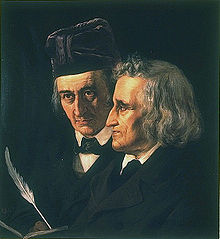




























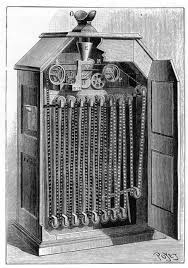



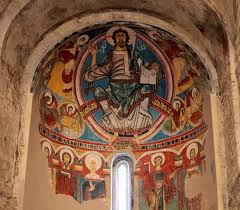








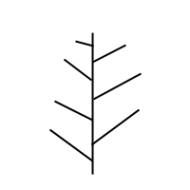 This is what the Barley looked like for the first couple hundred years.
This is what the Barley looked like for the first couple hundred years.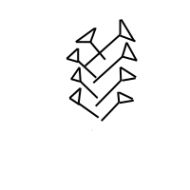







 Symbol- is doesn’t resemble what is being signified.
Symbol- is doesn’t resemble what is being signified.








